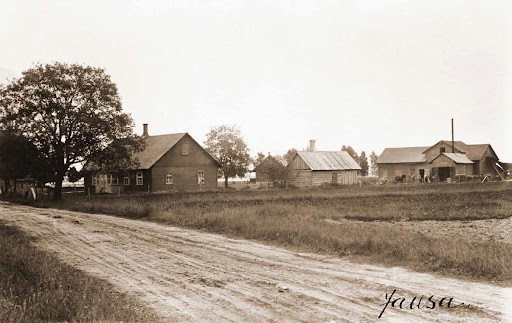The Jausa watermill

In October 1914, Johannes Pomerants, Jaan Tuulik, Aleksander Sergo, Mihkel Vaos, and Toomas Under rented part of the lands of Jausa Siim’s farm, in order to build a watermill there. Soon, everything was ready for milling flour; and grain loads were brought to Jausa from near and far. The watermill ground five or six 50-kg sacks of grain per hour into groats or coarse or fine-ground flour. Already in 1932, the original contract between the
owners was amended, because a sawmill was bought in addition.
The steam engine manufactured in London by the company Ruston Proctor & Co Lincoln has survived until today. Steam power was also used here to press roof tiles of cement. Those tiles can still be seen today on the roofs of several houses in the neighborhood. In 1949, the watermill building along with the equipment was con- fiscated from the owners by the Soviet government and given to the Jausa-Ranna collective farm. The latter started to use the sawmill, the capacity of which was just four logs per hour. In the 1950s-1960s, the water turbine and the portable engine were used to produce electricity on the spot. The cables were run up to the dwel- ling houses; and the village was illuminated. As a result of extensive drainage work, which started in the 1960s, the water level in the river dropped; and it became impossible to use the water turbine. However, work in the watermill continued; the machines were just powered by electricity. In the 1990s, the mill was returned to the descendants of the owners by the Estonian government; but as it was difficult to maintain and modernize it, its operation was ended at the turn of the 21st century. Nowadays, the watermill that was once run by the Jausa men is an interesting sight as
part of the industrial heritage of Hiiumaa.
Gallery
It is a waypoint on the journey
You might also be interested in:



